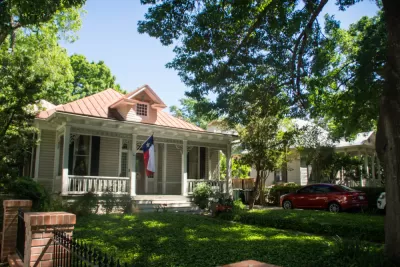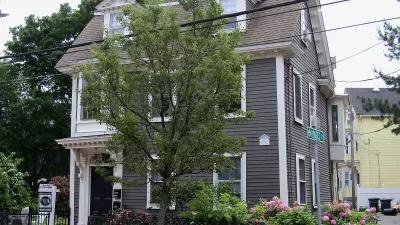As the city considers loosening regulations on accessory dwelling units, one writer argues that the reforms would boost affordable housing and provide more options for changing household needs.

A San Antonio Report piece by Jim Bailey argues in favor of reforming the city’s regulations governing accessory dwelling units (ADUs) to make it easier for homeowners to build ‘granny flats’ and meet the changing needs of families. As Bailey states, “Currently, our city’s development code allows homeowners to build ADUs, but outdated restrictions make it difficult for owners to build them. Removing these barriers should be part of a larger strategy that looks at how San Antonio can grow responsibly.”
According to Bailey, “San Antonio added more residents than any other city in the country last year, and is projected to add a million more by 2050.” Bailey offers one possible solution. “One simple thing we can do to build resilience in neighborhoods like we used to have is to make it easier to build modest accessory dwelling units.” Bailey highlights the benefits of ADUs: the ability for multigenerational families to live together while maintaining privacy and autonomy, an opportunity for renters to live affordably in neighborhoods previously inaccessible to them, a source of income for homeowners, and an affordable option for seniors who want to “age in place” in their neighborhoods.
In San Antonio, Bailey writes, “Our Removing Barriers to Affordable Housing Development & Preservation Subcommittee, as instructed by our Council-adopted Strategic Housing Implementation Plan, has been working on a series of code changes that make sensitive insertions of modest ADUs into neighborhoods a little easier to achieve.” These include reduced restrictions on ADU occupancy, uniform height limits, and a clear metric for allowable square footage.
While Bailey and housing advocates recognize that boosting ADU construction is by no means a silver bullet for solving the housing crisis, “the proposed amendments help ameliorate growing housing pressures” in a fast-growing city.
FULL STORY: Removing barriers to building accessory dwelling units is the right move for San Antonio

Alabama: Trump Terminates Settlements for Black Communities Harmed By Raw Sewage
Trump deemed the landmark civil rights agreement “illegal DEI and environmental justice policy.”

Planetizen Federal Action Tracker
A weekly monitor of how Trump’s orders and actions are impacting planners and planning in America.

The 120 Year Old Tiny Home Villages That Sheltered San Francisco’s Earthquake Refugees
More than a century ago, San Francisco mobilized to house thousands of residents displaced by the 1906 earthquake. Could their strategy offer a model for the present?

Ken Jennings Launches Transit Web Series
The Jeopardy champ wants you to ride public transit.

BLM To Rescind Public Lands Rule
The change will downgrade conservation, once again putting federal land at risk for mining and other extractive uses.

Indy Neighborhood Group Builds Temporary Multi-Use Path
Community members, aided in part by funding from the city, repurposed a vehicle lane to create a protected bike and pedestrian path for the summer season.
Urban Design for Planners 1: Software Tools
This six-course series explores essential urban design concepts using open source software and equips planners with the tools they need to participate fully in the urban design process.
Planning for Universal Design
Learn the tools for implementing Universal Design in planning regulations.
Clanton & Associates, Inc.
Jessamine County Fiscal Court
Institute for Housing and Urban Development Studies (IHS)
City of Grandview
Harvard GSD Executive Education
Toledo-Lucas County Plan Commissions
Salt Lake City
NYU Wagner Graduate School of Public Service





























